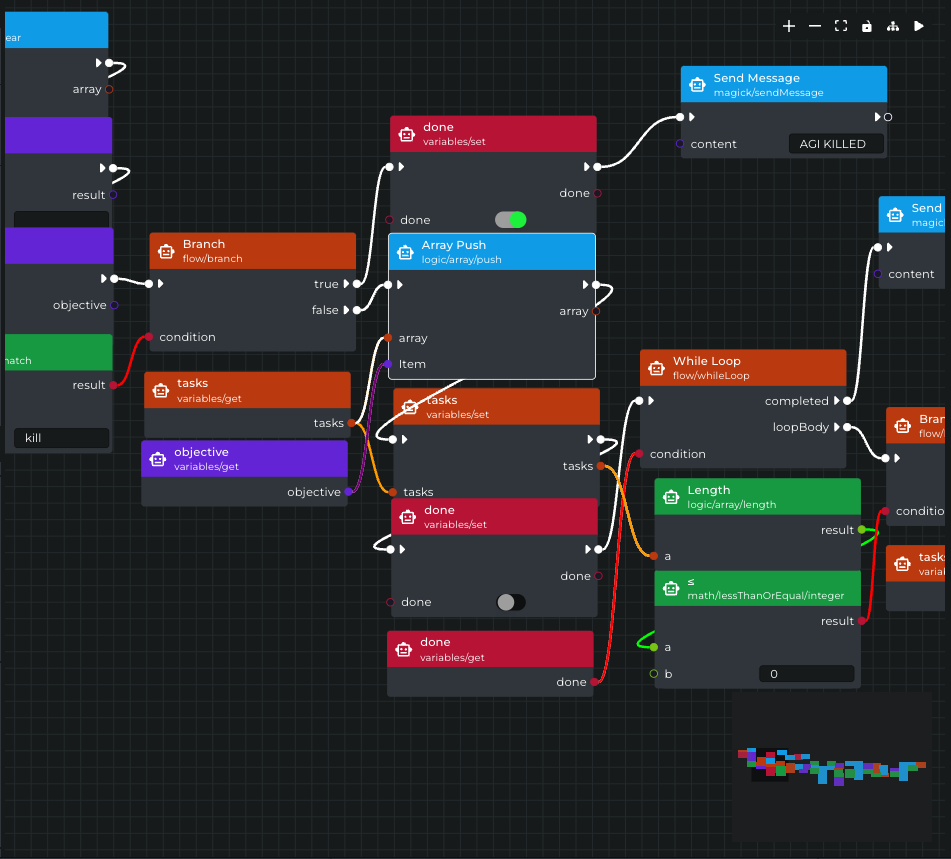Introduction
In Magick, a spell is a set of instructions that define the behavior and logic of an agent. It is a visual representation of a workflow or process, consisting of interconnected nodes that perform specific actions, transformations, or decisions.

Key Components of a Spell#
- Nodes: Spells are composed of various types of nodes, each representing a specific action, function, or condition. Nodes are the building blocks of a spell.
- Connections: Nodes are connected by wires that define the flow of data and control between them. Connections determine the order in which nodes are executed.
- Properties: Each node has its own set of properties that can be configured to customize its behavior. Properties allow you to fine-tune the functionality of nodes.
- Variables: Spells can store and manipulate data using variables. Variables can be used to pass information between nodes and make decisions based on their values.
- Events: Spells can respond to events triggered by external sources or internal conditions. Events can be used to trigger specific actions or branches within a spell.
- Conditions: Spells can include conditional logic to make decisions based on the values of variables or the outcome of previous nodes. Conditions allow you to create branching paths within a spell.
- Loops: Spells can include loops to repeat a set of actions or nodes multiple times. Loops allow you to iterate over data or perform repetitive tasks.
- LLMs: Create calls to one or more different LLMs (Language Learning Models) in a single run.
